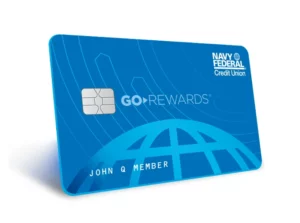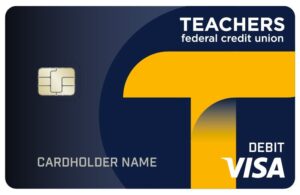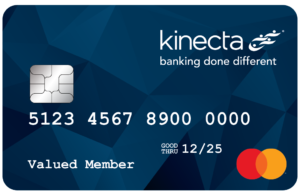Do you want to know how credit cards work? Are you willing to know why you need to use a credit card?
Keep reading and find out all about credit card basics, how a credit card works, and many other questions about card usage.
To Know How Credit Cards Work:
- Understand What Credit Cards Are
- Know Credit Cards Charges
- Understand APR and Other Credit Cards Terms
- Learn How to Apply for a Credit Card
1. Understand What Credit Cards Are
A credit card is a physical card that relates to a credit account at a financial institution that allows you to borrow money from the credit card issuer to purchase goods or services.
Here is how it works in six steps:
- Apply for a credit card at a financial institution.
- Receive approval from the issuer based on your credit score and overall financial situation.
- Check the credit limit the issuer grants you.
- Use the card to make purchases.
- Review the bill the issuer sends you each month based on purchases you’ve made in the previous 30 days but haven’t yet paid for.
- Pay off the outstanding balance in part or in full.
NOTE: Clear your bill in full so you don’t incur additional interest on the outstanding balance.
Your credit card company charges interest if you don’t pay your bill in full, backdating the interest to when you made a purchase. Note that the issuer may also revoke any introductory interest rate if your payment is late.
2. Know Credit Cards Charges
To know how credit cards work, understand credit card charges. Use your credit card carefully. You can accumulate charges in some ways.
- Pay attention to interest rates. Pay off your credit card balance in full at the end of the month to avoid paying interest on your entire balance—except when you’re currently in a 0% introductory period. You may receive an introductory interest rate when you first get the card. However, check to see if this applies to purchases or balance transfers, or both. Also, confirm what the interest rate is after the introductory period ends, and make sure you repay the amount in full if you can.
- Transfer your charges. You typically pay a fee when you transfer a balance from another card; this fee is between 2 and 5% of the transferred balance. Ensure the transfer is worth the cost.
- Avoid Late payments. whenever possible, pay your credit card bill on time. That way, you avoid late payment charges as well as the negative scrutiny of other lenders and credit card issuers—which could harm future credit applications, such as those pertaining to a mortgage or a vehicle loan.
- Make withdrawal charges. Debit cards and credit cards don’t work the same way at ATMs. There are no costs when using a debit card unless you use a privately run cash machine. Before you withdraw money, the issuer will inform you of any fees that apply. If you use a credit card to withdraw money from an ATM or any other cash machine, your card provider imposes a minimum fee or a percentage of the total amount.
Even if you pay off the entire balance before the bill is due, the interest starts accumulating immediately.
The same applies to other transactions—such as using a credit card to purchase foreign currency, gift cards or gambling transactions. It’s best to avoid taking out cash on a credit card.
Credit card checks come with fees
A credit card check is like a normal check, but the money goes on your credit card bill instead of coming out of your bank account. Credit cards are expensive to use and it’s best to avoid them—see the cards like cash withdrawals.
The interest rate is higher, and there are additional fees. Credit card checks don’t have the same protection for your purchases as card transactions. Credit cards are not as popular as before, and you have to ask for them from your card provider.
3. Understand APR and Other Credit Card Terms
APR – the annual percentage rate is the annual cost of borrowing money with a credit card. It’s the interest rate the card issuer charges on any outstanding balance after your payment due date. Pay off your card’s full statement balance to avoid interest charges. If you do that, you don’t pay any interest on purchases you make.
Balance – the total amount of every purchase or bill paid is equivalent to your balance. A credit card balance is an exact amount you owe.
Credit limit – the maximum balance a credit card has. Cash advance limits vary between credit cards.
Credit card – a physical card you link to a credit account. Make transactions with the card using that credit account.
Unsecured credit card – a credit card that doesn’t require the cardholder’s security deposit. Credit cards are typically unsecured.
Secured credit card – a credit card that requires you to make a security deposit when you open the account.
Cash advance – a transaction that allows you to withdraw money in advance. However, avoid taking cash advances with a credit card because cash advance often have higher APRs and instantly begin to accrue interest.
Balance transfer – a transaction that allows to move debts from one account to another with balance transfer. Check if your card allows balance transfer.
Available credit – the difference between a card’s credit limit and its available credit. If, for example, you have a $300 balance on a card with a $1,000 credit limit, then its current available credit is $700.
Revolving line of credit – a line of credit you can borrow from, up to the limit, as long as the account is open.
Minimum payment – the lowest amount you need to pay on your credit card by the due date. If you don’t pay at least this much, the card issuer charges you a late fee.
Statement balance – the credit card’s balance on your most recent statement closing date. By paying this amount in full every billing cycle, you can avoid interest charges on purchases you make.
Credit score – a number that rates your creditworthiness, or the likeliness that you’ll repay what you borrow.
Here’s how to use a credit card wisely:
- Only charge what you can afford
- Stay well below your credit card limit
- Pay in full.
- Know your benefits
- Review your statement
4. Learn How to Apply for a Credit Card
To know how credit cards work, learn how to apply for one. The first step is to check your credit score from TransUnion, Experian or Equifax to know the credit card you qualify for. Decide why you need a credit card to clarify whether or not you don’t mind paying annual fees. Do you intend to carry a balance or clear your outstanding debts in full?
Read the credit card terms and conditions to know the annual fees, APR, penalty fees, and so on. Check your chances of getting an approval and determine your repayment method. Provide basic personal information such as your full name, address, date of birth, and so on. Submit your application and wait for approval.
Recap
To know how credit cards work, understand what credit cards are, know credit cards charges, and understand APR, other credit cards terms, and learn how to apply for a credit card.








No Comment! Be the first one.